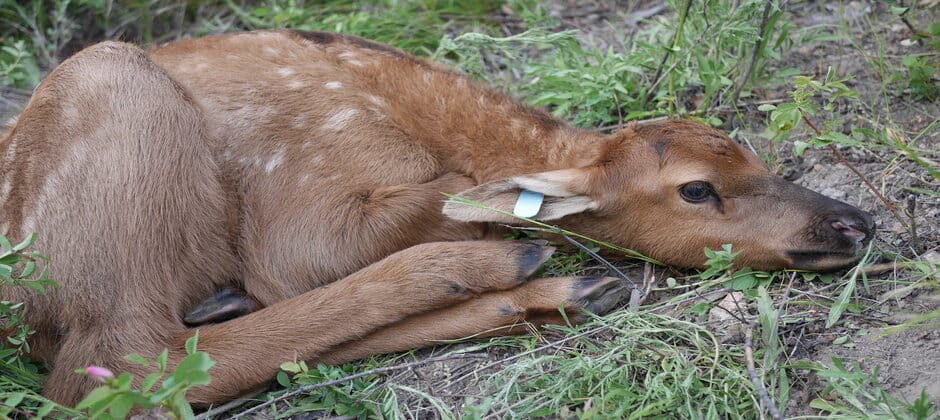Share this article
WM: Puma harvest bolsters elk population in western Montana
Mountain lion predation is the main cause of death in young elk calves in western central Montana, but increased harvest on the big cats can result in larger ungulate population numbers over time.
The discovery is surprising given the widespread assumption that wolf reintroduction in the state has been a major cause of elk decline.
“Wolf restoration was a really controversial issue that coincided with the elk population going down,” said Kelly Proffitt, a wildlife research biologist at Montana Fish, Wildlife and Parks and the lead author of the study published recently in Wildlife Monographs. But she and her colleagues’ deeper analysis showed little relationship between the two factors. “It was surprising we found a limited impact of predation on calves [from wolves].”
Gray wolves (Canis lupus) did have profound impacts on the ecosystem in parts of Montana since their reintroduction, particularly around the Greater Yellowstone Ecosystem. But Proffitt and her colleagues wondered if these effects were similar in other parts of the state that wolves had recolonized. They looked at west central Montana around the watershed of the Bitterroot River south of Missoula.
In 2009, elk (Cervus canadensis) in the study area had record low recruitment — calves weren’t surviving. While elk weren’t of conservation concern in the state, robust numbers are important for the hunting community.
Proffitt and her colleagues began to make a whole ecosystem analysis of the top-down, and bottom-up factors that could be affecting elk numbers in the area in 2011. They fit VHF tags on newborn calves’ ears and placed GPS collars on adult females for radio tracking. They tracked the individuals, following up with areas where there were likely kill sites. The team assessed the predator that was responsible for the kill by looking at scat, paw prints or taking swabs from bite wounds for DNA clues. They also determined if the death was natural. In some cases, the kill scene was quite complex since scavengers might have happened upon the animal after it had already died.
They found that while black bears (Ursus americanus) and wolves sometimes killed elk calves in the region, pumas (Puma concolor), otherwise known as mountain lions, were overwhelmingly responsible for the ungulates’ deaths.
The team also conducted population modelling, which revealed calf survival was an “an important influence on the population.” In other words, predators killing calves was likely affecting the overall population numbers of elk in the region.
On top of this, research on the environment and available forage showed some other potential impacts. Logging and wildfires likely affected the availability of forage for elk in different ways. Female elk in other areas normally had about a 90% pregnancy rate, but only about 70% of females in this area were pregnant.
But overall, Proffitt still said that predation from pumas that reduced calf survival was likely the main cause of elks’ population reduction.
“We did find some habitat influences for sure, but our population modeling work suggested they were not as influential in dictating the population growth rate as the predation rates were,” she said.
Over the study period, hunting regulations came into play as well. Mountain lions used to have more open hunting rules but had been more restricted in the years leading up to this study.
Female elk hunting was basically eliminated in 2011, while the hunting of males was reduced. In 2012, the quota for mountain lion harvest was liberalized by the state with the goal of reducing the population of the big cats by 30%.
A mountain lion population estimate showed that by 2016, the goal had been reached, and the population was down by about 30% in that area. Meanwhile, in an adjacent watershed that had not allowed increased harvesting of the big cats, Proffitt and her colleagues didn’t see this type of decline.
After mountain lion hunting was increased, the researchers saw an uptick in calf recruitment — especially in the years following 2012 that experienced the highest mountain lion harvests. Since then, there has also been a slow increase in total elk numbers in the region as well.
Proffitt said the study shows that reducing the big cats can help boost the elk population in the region, depending on how and if wildlife managers want to use it.
“People have obviously strong opinions of it,” she said.
This article features research that was published in a TWS peer-reviewed journal. Individual online access to all TWS journal articles is a benefit of membership. Join TWS now to read the latest in wildlife research.
Header Image: A newborn elk calf fitted with a VHS tracker in its ear. Credit: Montana Fish, Wildlife and Parks








